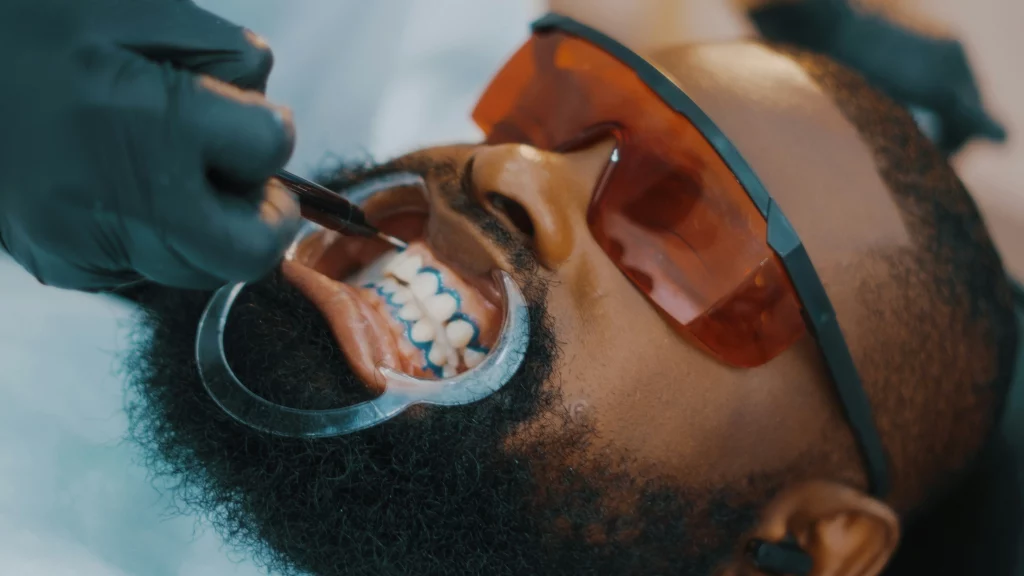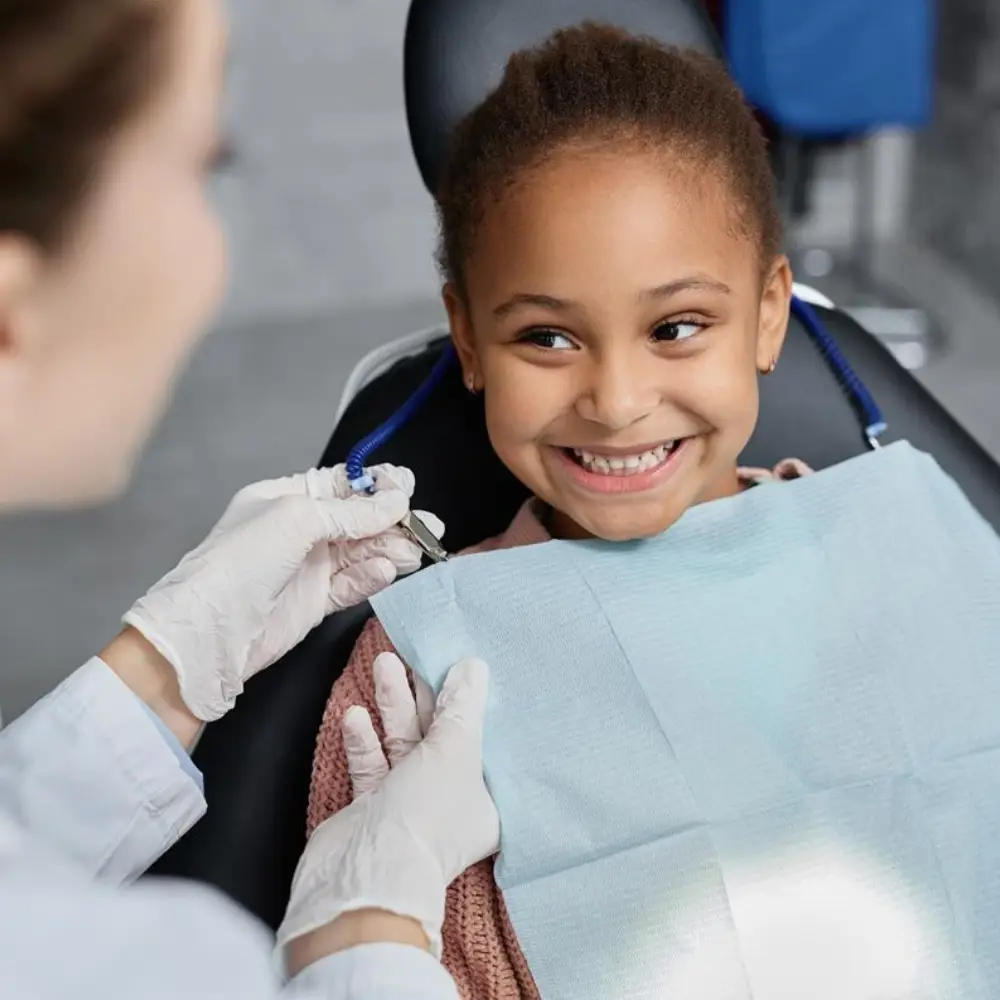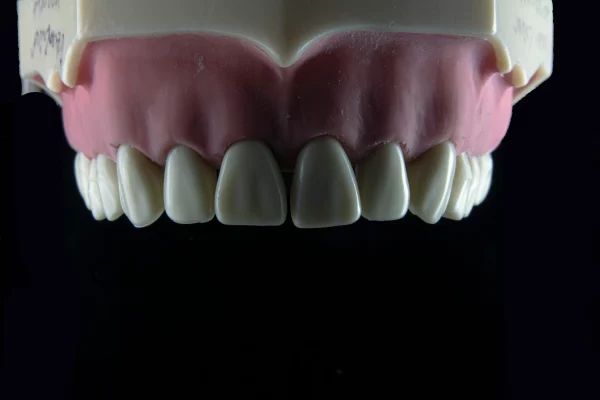One of the most popular cosmetic procedures is teeth whitening, and it is not surprising that people who wear Invisalign to straighten their teeth are wondering whether they can safely whiten their smiles during their orthodontic treatment period. The invisalign aligners are clear and removable; this creates an opportunity to use them together with whitening treatments. This is however not an easy process that involves applying a whitening product and wishing it to work.
Without the proper technique, patients can suffer gum irritation, sensitivity, or an uneven whitening effect. That is why it is crucial to comprehend the way whitening agents can interact with Invisalign trays. A well-guided and well-planned process can make you have the best of both worlds a perfectly aligned and a brilliantly white smile.
Can You Whiten Teeth While Wearing Invisalign Aligners?

Another frequent question of those beginning to use Invisalign aligners is, “Can I continue to whiten my teeth during the treatment with Invisalign trays?” The good news is, yes–it can be done. Due to the fact that Invisalign trays are removable and transparent, they can actually be used alongside some whitening procedures. Nonetheless, it is also necessary to understand how to do so without being sensitive, uneven, or causing damage to your aligners. By learning the science behind Invisalign and teeth whitening, you can safely whiten your smile whilst straightening your teeth.
Whitening Products Compatible with Invisalign Trays
The Invisalign trays fit tightly over your teeth, making an excellent delivery mechanism to some whitening products. Applied properly, they can serve to keep the whitening gel in place to achieve better results. Your dentist can also give you whitening gels that can be used safely inside the aligners without affecting your treatment. But self-purchased products such as generic gels or strips do not fit correctly and may drip over the gums, causing irritation or uneven whitening. To have the best and safe result, it is advisable that you consider the advice of your dentist before embarking on any whitening procedure during the Invisalign treatment.
How Invisalign Can Enhance or Interfere with Whitening
The aligners themselves serve as a protective barrier, which in fact can optimize whitening results by keeping the gel in close proximity to your teeth. This enclosed setting provides greater consistency of whitening than the strips or trays that are not as form-fitted. Nonetheless, it is advised to be careful as whitening products worn too long or gels that are not intended to be used with Invisalign can make teeth sensitive and cause irritation to the gums. To avoid unequal coloring, the aligners must be well cleansed before any whitening agent is applied and there must be no trapped plaque or residue to interfere with the process.
Dentist vs. At-Home Whitening Methods During Treatment
Professional teeth whitening that is done by your dentist will usually be the safest and most effective when undergoing Invisalign. At-home kits that are specially formulated to treat aligners may be convenient, but generic whitening gels or strips usually result in inconsistent or uneven results. The dentist will know the right concentration, application time, and frequency to apply so that your teeth can whiten evenly without the risk of damaging your oral health.
Best Whitening Practices for Invisalign Users

It takes a careful strategy to maintain a bright smile during the process of straightening your teeth with Invisalign. Aligners are tight over your teeth, which means that they may impede or assist the whitening process depending on the technique employed. To ensure that the outcomes of Invisalign treatment are even, safe, and lasting, one needs to adhere to the best practices that apply to Invisalign users.
Timing Whitening Sessions Between Aligner Changes
Aligners are normally exchanged after every one to two weeks, depending on your treatment plan. Venes Whitening sessions must be scheduled so as not to overlap with a new tray that might not fit well over newly treated teeth. Some dentists suggest applying whitening gel during short periods just before swapping to a new set of aligners because this will guarantee that the gel is in direct contact with the teeth and there is minimal irritation.
By keeping your whitening in sync with your aligner change, you can ensure not only the most even results, but also prevent unnecessary wear to your trays. This method will keep the integrity of your aligners intact and the comfort of your whitening intact, ensuring you get a whiter smile without jeopardizing your treatment progress.
Avoiding Gum Irritation and Tooth Sensitivity
Sensitivity of teeth and irritability of gums are the most frequently occurring side effects of teeth whitening when using Invisalign. This is because whitening agents have the potential of temporarily weakening the enamel and irritating the soft tissues when abused. To minimize discomfort, lower-concentration gels are recommended, sessions should be short and rinsing should be thorough. A lot of dentists also prescribe desensitizing toothpaste or even applying protective barriers to protect the gums during treatment. These minor changes will help in making whitening easier without discontinuing Invisalign.
What to Avoid to Prevent Uneven Whitening
Avoid old or ill-fitting whitening trays, excessive amounts of gel, and extended wear of aligners beyond the recommended time, as they can cause discomfort and uneven whitening. Before eating or drinking anything other than water, it is also good to take off the aligners as staining foods or beverages can lead to discolored spots. Using a dentist-monitored whitening program, you will be able to ensure that your teeth whiten without unevenness and keep your Invisalign treatment on schedule.
Combining Invisalign and Whitening for Maximum Results

A more straightened smile is already a huge confidence booster but many patients want to take things a step further and brighten up their teeth in the process. Invisalign and professional teeth whitening together can give you a smile that not only looks straight and gorgeous, but also bright and blemish-free. When properly combined, this combination could help you save time, maximize results, and achieve the smile makeover of your dreams.
Creating a Treatment Plan with Your Dentist
A plan that involves both your orthodontist and dentist will ensure that the cosmetic and health benefits of your treatment are maximized as well as being safe. Your dentist can thoroughly assess the health of your enamel and gums to help determine whether your teeth are prepared to be whitened and prescribe whitening agents that are powerful yet gentle combined with Invisalign. Meanwhile, your orthodontist makes sure that your aligners are still working to shift your teeth without obstruction. By designing a hybrid timeline that suits both procedures, you can have a smile that becomes straighter and brighter concurrently- without any undue sensitivity, enamel loss, and delays in your orthodontic process.
When to Whiten — Before, During, or After Invisalign?
Invisalign Before and After Whitening Whitening can provide a short-term aesthetic improvement to your smile prior to Invisalign treatment but because your teeth will remain in motion, you may need to have them touched up after to keep them evenly colored. Conversely, waiting until the end of Invisalign means that whitening agents can cover all surfaces of teeth uniformly, which will give the most consistent results. Nevertheless, a big number of patients opt to whiten in the middle of therapy, and they are encouraged by the progress of seeing their teeth not only straightened but also brightened.
The most effective whitening schedule will depend on your personal needs, and so it is important to consult your dentist, so they can examine your oral health, hear what your goals are, and prescribe the most effective whitening schedule to you.
Managing Expectations: How White Will Your Teeth Get?
The results of the whitening may vary according to the individual, on the basis of the thickness of the enamel, the nature and depth of the preexisting stains, and the adherence to the whitening regime. Some patients can feel a dramatic change, others feel the changes gradually over time. It is important to set realistic expectations- teeth whitening is not a one time thing and it requires aftercare. With the help and assistance of a professional, good oral care, and a pinch of patience, you can easily have a brighter smile that not only looks good, but lasts longer.
Common Mistakes to Avoid When Whitening with Invisalign
Whitening your teeth during Invisalign treatment is a safe and rewarding method of improving your smile but only when done properly. Most patients unwittingly commit errors that decrease the efficacy of whitening- or even worse, lead to sensitivity and damage of the enamel. By knowing about these pitfalls, you can safeguard your oral health as you attain the bright and confident smile that you desire.
Using Generic Whitening Gels Not Meant for Aligners
Applying over-the-counter gels that are not designed to be used on Invisalign trays is a frequent error that may cause irritation to gums and uneven outcomes. Since the aligners are held tightly against your teeth, only gels that are made to fit custom trays should be used. To be on the safe side, consult your dentist to provide you with safe and effective whitening without damaging your enamel and gums.
Skipping Professional Advice for Convenience
Most of the patients attempt to whiten their teeth at home and without any professional supervision which can cause them unnecessary risks including tooth sensitivity, gum irritation, and even an interruption in their orthodontic treatment. Although over-the-counter products might appear to be convenient, they are not necessarily made to fit with Invisalign trays, and they can undermine comfort and efficacy. A dentist can also assess the health of your teeth and gums in order to determine whether they are healthy enough to whiten, suggest safe products, and provide advice on the right timing during treatment.
Consulting a professional will also help eliminate any adverse reactions with other dental care products to help you get the bright smile you want without jeopardizing the outcome of your orthodontic treatment.
Whitening Too Frequently or Too Early in Treatment
Bleaching excessively or prematurely may make teeth sensitive and leave your smile looking hodgepodge. To prevent such problems, it is recommended to adhere to the schedule proposed by your dentist, and your enamel will have time to restore. When you schedule whitening sessions appropriately, you can safely whiten your teeth, and you will be able to make the process complement, instead of interfering with your Invisalign treatment.
Frequently Asked Questions (FAQs)
1. Can I whiten my teeth while using Invisalign aligners?
Yes, whitening is possible, but it should be done carefully. Using gels or pens designed for aligners, under your dentist’s guidance, ensures safety and effectiveness. Avoid generic whitening products that may irritate your gums or damage the aligners.
2. Will whitening gel damage my Invisalign trays?
When used properly, whitening gel will not damage Invisalign trays. The aligners are made from durable, BPA-free plastic designed to withstand gels that are specifically formulated for use with them. Using the correct gel ensures safe application and even whitening without compromising the fit of your trays. However, high-concentration or generic gels may pose risks, such as warping the plastic or irritating your gums. Uneven application can also occur if the gel is not intended for custom trays. For the best results, always use dentist-approved products made to work safely with Invisalign.
3. When is the best time to whiten during Invisalign treatment?
Many dentists recommend whitening mid-treatment or right before switching to a new aligner tray. This approach ensures that the whitening gel has maximum contact with your teeth for better results. Using a new or properly fitting tray also helps the gel distribute evenly, reducing the risk of streaks or uneven color.
4. Can I use whitening toothpaste with Invisalign?
Yes, whitening toothpaste is generally safe to use daily while wearing aligners. It can help maintain the brightness of your smile by gently polishing the enamel and removing surface stains from foods and drinks. Many formulas are designed for everyday use, so they won’t damage your teeth or your aligners. However, it’s important to understand that whitening toothpaste alone may not deliver the same dramatic results as whitening gels or professional treatments. Instead, it works best as a supportive step to prevent new stains and maintain the results of other whitening methods. Consistent use alongside proper oral hygiene can help keep your smile looking fresh throughout your Invisalign journey.
5. What if only part of my teeth whiten while wearing aligners?
Uneven whitening is a common concern during Invisalign treatment, often caused by inconsistent gel application or trays that don’t fit snugly against the teeth. When the whitening gel doesn’t spread evenly, some areas may appear brighter than others. To avoid this, it’s important to carefully follow your dentist’s instructions for gel placement and aligner use. Proper fit also ensures that the whitening agent makes full contact with each tooth surface. In some cases, minor touch-ups may be needed after your Invisalign treatment is complete. With the right approach, you can achieve a more consistent and uniform smile.
Call to Action
If you’re considering teeth whitening while wearing Invisalign, professional guidance is essential to achieve a bright, even smile safely. Schedule a consultation with Graham Park Dental to create a customized plan that aligns with your orthodontic treatment. By combining careful whitening, proper timing, and routine oral care, you can enjoy straighter and whiter teeth simultaneously. Take the first step toward a confident, radiant smile today and see the difference personalized care makes.


